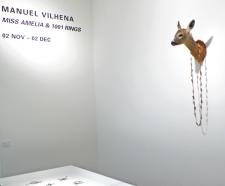
Susan Cummins: As I understand it, there are two parts to this show. Is that correct, and can you describe the two parts?
Manuel Vilhena: Yes. One part is Miss Amelia, a story about a girl in strange and curious lands. The story develops over a period of seven days and is basically a voyage. During this voyage, Amelia meets many people and has conversations with them. (Within these conversations lie my working philosophical principles.) This story gave rise to jewels that represent characters in the plot, and subsequently, the jewels themselves created deviations and new pathways for the story to unfold. As such, the jewels and story created each other.
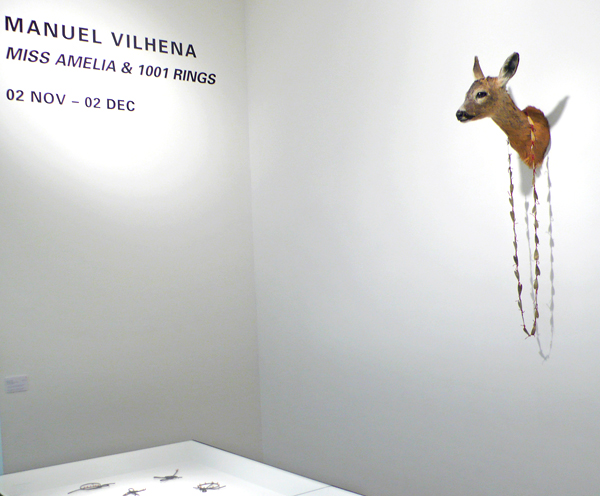
Susan Cummins: As I understand it, there are two parts to this show. Is that correct, and can you describe the two parts?
Manuel Vilhena: Yes. One part is Miss Amelia, a story about a girl in strange and curious lands. The story develops over a period of seven days and is basically a voyage. During this voyage, Amelia meets many people and has conversations with them. (Within these conversations lie my working philosophical principles.) This story gave rise to jewels that represent characters in the plot, and subsequently, the jewels themselves created deviations and new pathways for the story to unfold. As such, the jewels and story created each other.

How do Miss Amelia & 1001 Rings relate to each other?
Manuel Vilhena: The relationship is based on the working concept that all is story. As such, both parts are descriptions or developments of the same basic idea.
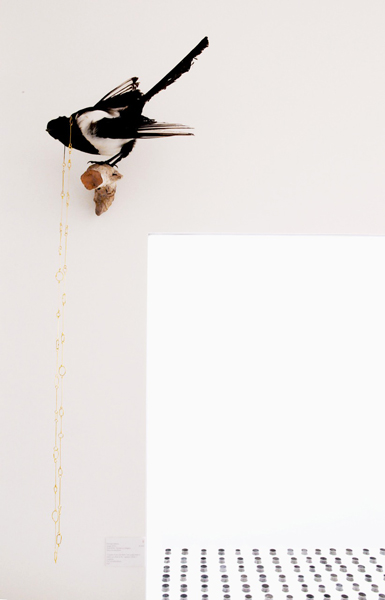
Manuel Vilhena: The story should be read to be fully appreciated, of course. There are several main characters in this story, besides Amelia herself.
One, a deer, a female deer,
A lazy horse in the sun
It’s a story about the Self
And an elephant on the run.
The bird is intuitively rather than specifically an eagle. It is recurrent as a background idea and only fully comes alive at the end of the story.
The flight path of the bird (the real one which inspired the character) served as a basis for the graphic aspect of the jewels (brooches). One can preview the book before ordering to have an idea of its contents.
Can people get a copy of the book so they can read the whole story?
Manuel Vilhena: Yes. There are three options. The graphic version includes the story and photos of the pieces in a hardcover binding. It is ready on demand. The text-only version is more economical, and it is in preparation.
Finally, each piece in the Miss Amelia collection comes with its own book, a “gourmet” linen bound version.
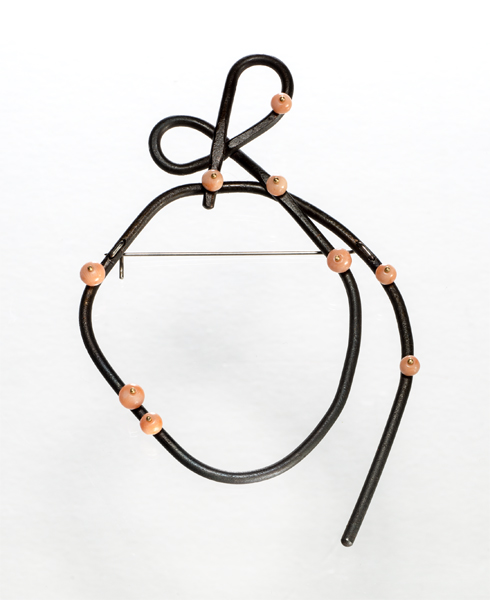
In the 1001 Rings part of the show, you want interaction with the audience both by wearing off the surface of the ring and bringing something to replace it in the installation. Why are you interested in this interaction?
Manuel Vilhena: I started my jewelry voyage by selling jewels on the street, in markets, at festivals, etc. The interaction with the client/customer was, for me, part of the work itself. It’s about the meeting of two people and the discussion, dialogue, and intrigue even, of the interaction, which is started by means of an object. Sadly, the contemporary jewelry world, with its galleries, agents, even web sales (god forbid!) separates maker from wearer immensely. The interaction that I propose through this project somehow represents that meeting (even if I am not present all the time). It is more fulfilling for me, and I hope, more meaningful for the client as well.
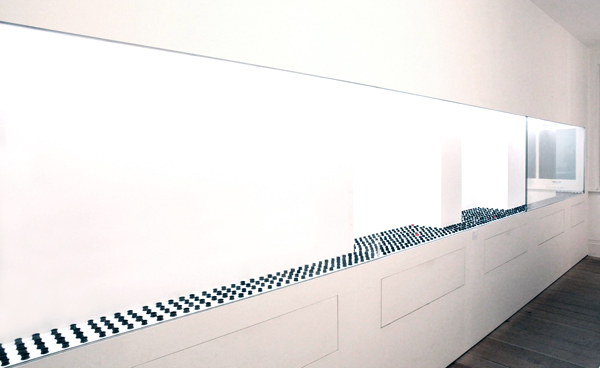
Manuel Vilhena: It is a matter of placing the objects in the gallery space in a certain sequence. As you come in, you are greeted by a bird that stole some gold jewelry. Then, as you turn, a deer greets you in a friendly and inviting way. In the front, a sea of black rings against a white background creates mystery and some kind of mental pause. The journey then continues with a group of eerie wood rings. It ends with a sculpture that is seemingly out of place, thus creating (or hoping to create) the feeling one gets from the written story.




